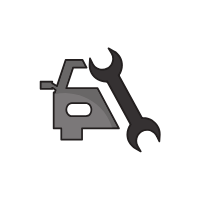Crane Hire Safety Tips
Safety is an import aspect of crane hire. It is especially so if you have not used the equipment before. Below is a short guide on the safety procedures you should observe when hiring a mobile crane.
Choose The Right Crane
Several factors will determine the type of crane you will hire. These including the following:
How much weight will the crane lift? Carry decks are ideal for light loads. Crawler and tower cranes can lift over 500 tonnes.
What are the site conditions? You will need a rough terrain crane if the site is muddy or rocky.
How high will you lift the load? Different cranes have varying booms. As such, check the height of the boom.
How many hours will the crane work? Inferior and low-quality models will break down when overworked.
Inspect The Equipment
The crane must be fully functional and in good condition. Most hire companies will provide inspection and service reports detailing the condition of the crane and any repairs it might need. Nonetheless, it would be wise to conduct a visual inspection. For example, check the engine and transmission fluids. The hydraulic and air braking systems should not have any leakages. Additionally, the wire rope should not have any signs of wear. Enter the cabin to ensure the load charts are visible. Besides, the electrical controls and instrument cluster must be functional. Moreover, it must have safety equipment such as seatbelts and a fire extinguisher.
Setting Up The Crane
When setting up the crane, you should inspect the site to identify risks such as low-lying branches and electrical cables. The crane's outriggers should be positioned on a dry, flat and rigid surface. Do not use mobile cranes on slippery and sloping areas. Preferably, the crane hire company should provide qualified personnel to set up and operate the equipment.
Site Discipline
Your employees must observe caution when using the crane. For instance, they should develop an effective method of communication to ensure the crane operator receives the right signals. Hand signals, flags and walkie-talkies are considered suitable. Use the crane for its intended purpose. For instance, they should not be used to lift personnel. Do not overload the crane or use it during heavy winds and storms. Park the mobile crane on a flat surface. Besides, the operator should unload the crane and retract the boom. Regular inspections will help you identify problems such as cracked pulleys and electrical failures.
Top mobile crane inspection tips include choosing the right crane, inspecting the equipment and observing the proposed crane set-up and site discipline guidelines.
Contact a local crane hire company to learn more.
